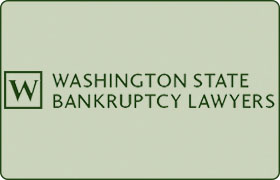Sequim Bankruptcy & Debt Lawyer, Washington
Sponsored Law Firm
-
 x
x

Click For More Info:
-
Washington Law Group, PLLC
Proudly Serving The Greater Puget Sound Region» view mapBankruptcy & Debt, Chapter 7, Chapter 13 CONTACT US FOR A CONSULTATION
Bankruptcy is unquestionably one of the most powerful financial tools on the planet. Yet, many people struggle for years before even learning how easy it can be to qualify.
800-699-2370
Alan E. Millet
Landlord-Tenant, Estate Planning, Business & Trade, Commercial Bankruptcy
Status: In Good Standing
William Jeffrey Davis
Estate Planning, Civil Rights, Corporate, Collection
Status: In Good Standing Licensed: 43 Years
Sandra Wilton
Elder Law, Corporate, Credit & Debt, Personal Injury
Status: In Good Standing Licensed: 31 Years
Esther Ann Snowden
Elder Law, Land Use & Zoning, Business & Trade, Commercial Bankruptcy
Status: Inactive Licensed: 38 Years
Patricia Lee Jackson
Estate Planning, Family Law, Civil Rights, Collection, Divorce
Status: In Good Standing Licensed: 44 Years
John Augustus Wood
Other, Land Use & Zoning, Consumer Rights, Consumer Bankruptcy
Status: In Good Standing Licensed: 54 Years
Denis Wayne Stearns
Litigation, Consumer Bankruptcy, Personal Injury, Household Mold
Status: In Good Standing Licensed: 32 Years
Joseph J. Schodowski
Workers' Compensation, Insurance, Bankruptcy, Personal Injury
Status: In Good Standing
Joseph Bennett Wolfley
Accident & Injury, Contract, Credit & Debt, Malpractice, Medical Malpractice
Status: In Good Standing

 Jason Newcombe Seattle, WA
Jason Newcombe Seattle, WA
